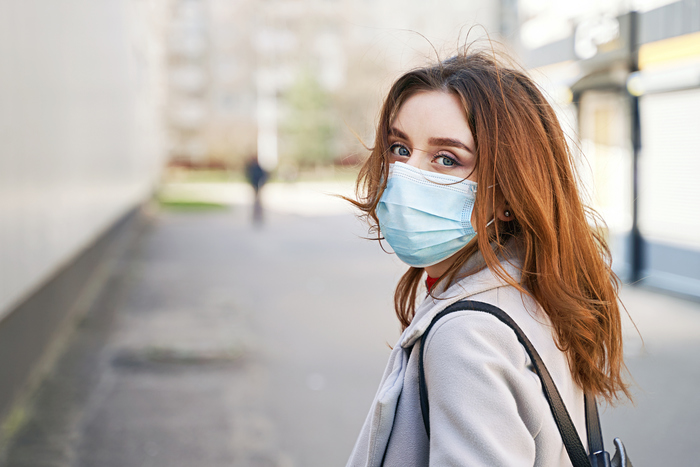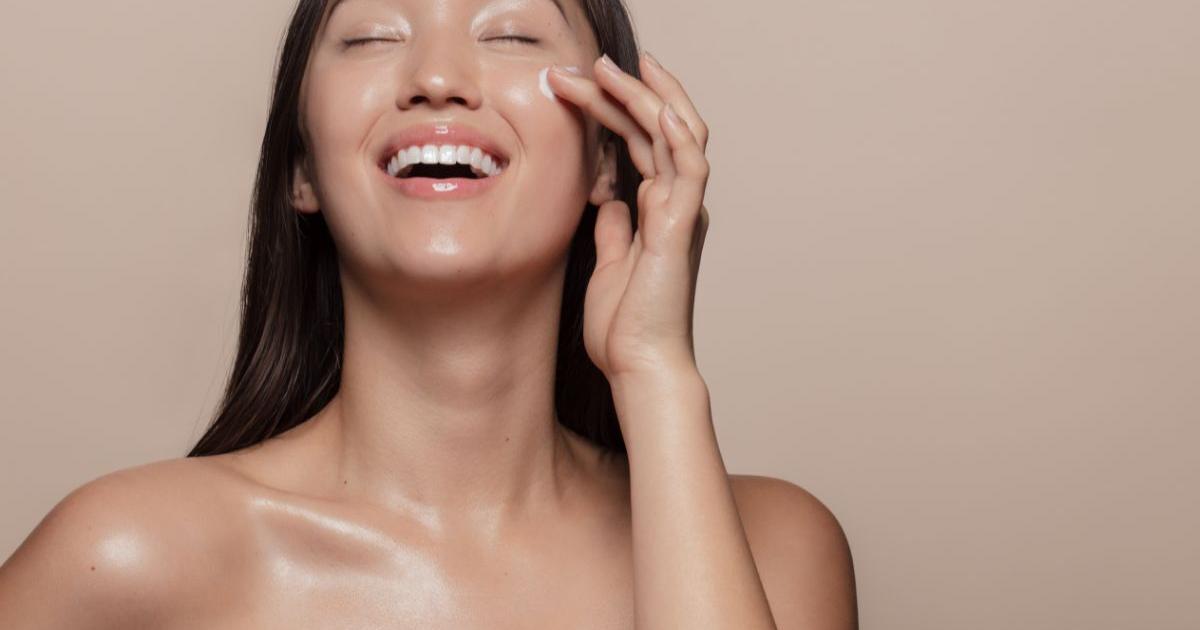The research is English but beyond the percentages in the results it is also valid for us Italians: 76% of British people struggle to understand people who wear masks and over 50% are unable to interpret facial expressions. These days, we have known it well for over a year, we speak with the eyes, understanding passes through the gaze. But how to understand what's behind the anti-Covid protective mask? How to understand if who we have in front of us is sincere and how can we send signals that can communicate human emotions? A body language expert and TV celebrity Judi James talks about it: the movements of the eyes, eyelashes, eyebrows and even cheeks are in fact very useful for communicating.
James indicated that
a genuine-looking smile
, for example, it should involve some creases in the corners of the eyes and a rounding of the cheeks. If the eyes narrow and the eyebrows go up and down in one quick motion it can mean that someone is flirting and "appreciating what they see." Thin eyes and rounded cheeks suggest a shared excitement, and those in love will also show dilated pupils, giving life to real "eyes of love". But not all eye cues are indicators of positive feelings, as Judi James points out. There are also signs that reveal emotions of disgust or anger.
To recognize disgust
on the face of someone wearing a mask you may notice a ripple in the eyebrows, a subtle eye shape, and a dimple in the skin on the bridge of the nose.
Anger, on the
other hand, is expressed with eyebrows that drop drastically above the eyes, a stern look and eyelids that blink frequently. Tilting your head forward also helps emphasize disappointment. Speaking on behalf of Vision Direct, which commissioned the 2,000 adult study and eye expression research, Judi James commented: “Humans have always exploited facial expression as a means of social communication, and over the course of for centuries
the focus has always been mainly on the mouth
. " “We have come to depend on the movement of the lips because we see these as a shortcut to building social relationships, which is why
the use of masks has caused difficulties in our ability to communicate
. The good news is that our eyes are more than able to transmit and read non-verbal signals. In fact, one of the reasons we tend to pay attention to mouth expressions is that
eyes are very strong (and more honest) communicators.
of moods and emotions. "Vision Direct results illustrate that more than two-thirds of adults have a hard time guessing the emotions of a person wearing a mask, and 4 out of 10 mask-wearing people were misunderstood when trying to communicate something. More than six in 10 adults admit that they did not understand what their interlocutor with the mask was saying, and 42% attributed the problem to the fact that they could not see his lips. In particular, 55% of the participants misinterpreted the expression of the person they were talking to. Of these, 7 out of 10 then tried to focus on the eyes to guess the expression the person was making behind the mask.71% of OnePoll respondents from Vision Direct agree that eyes would be a key indicator for understanding an expression if one could interpret them.
"If reading other people's eye expressions is important, we must also - says Judi James - be aware of our expressions.
The faces we make
"At rest" can make us seem unhappy and unapproachable, and without all those shrugs or smiles in our communicative repertoire we have to put in a greater effort and use our eyes to convey friendly smiles and expressions of empathy. " Alessandro Cuttica, content manager for Vision Direct Italia, added: "Since masks complicate communication by preventing us from showing our facial expressions, it is up to our eyes to convey our emotions. Not surprisingly, communicating clearly yes proves particularly difficult for those who wear glasses: they can block the transmission of non-verbal signals from the eyes, particularly if the lenses fog up due to the mask. "
Here are 10 TIPS FROM JUDI JAMES:
SMILING EYE
"Smile like a cat" is my advice, as cats "smile" by shrinking and softening the shape of the eyes. An authentic looking smile should involve some creases in the corners of the eyes and a rounding of the cheeks. You can also lift the lower lid slightly to express joy.
SIGNAL OF UNDERSTANDING
A sign of understanding can work like a micro handshake, and suggests good humor and sympathy for the other person. To send this signal, the eyes should be slightly narrowed, and the eyebrows raised and lowered with rapid movements. The cue can also be used to establish a temporary bond with other people, even strangers. In a social place like a bar or club, it can also be used to flirt and send a message of appreciation.
FUN / HUMOR
In an unhappy moment, this is a vital gesture. When everything seems negative to us, we tend to be attracted to people who can improve our mood. For the eyes, fun is a ritual that consists of two parts. The first part involves a rounding of the eyes that suggests a shared enthusiasm. The eyebrows remain in a neutral position so as not to look scared. The second part involves a thinning of the eyes - as if to make them smile - accompanied by a slight lowering of the upper eyelid.
DISGUST / ANTIPATHY
When we don't like something, we tend to imitate the behavior of a child who refuses food. In the eyes this manifests itself in a puckered frown, a subtle eye shape, and a crack in the skin on the bridge of the nose. This is one of those facial expressions linked to a survival instinct: if the food smells bad, we close our mouth and eyes automatically. Sometimes we even shake our heads to make it clear that we don't want to taste it.
LOVE / ATTRACTION / LIKING
Our eye expression softens when we see someone we like.
We adopt a real "gaze of love" when we see our partner.
Non-verbal revelation is evident even if it only comes from the eyes.
Pupil dilation is a physiological response when we look at someone we like and since this occurs naturally and cannot be simulated, it is one of the biggest "clues" the body offers us.
FEAR
Fear is mainly an expression that shows itself in the eyes.
It involves a rounding of the shape of the eye, accompanied by a small curl and a raising of the inner eyebrows.
SURPRISE / SHOCK
This is another expression of the eye that comes from the spirit of survival.
In fact, opening your eyes allows better vision during a surprise attack.
The eyebrows arch and the eyes widen so that the whites of the eye are visible almost all around the iris.
CONCERN / EMPATHY
If a person is sharing their problems it is important to show concern through the expression of their eyes.
The eyebrows must be pulled into a slight frown, but the very shape of the eyes must be softened to prevent the frown from being mistaken for anger.
A small tilt of the head signals active and empathic listening.
ANGER
Eye cues may vary according to the level of anger, but a "classic" expression of impatience consists of frowning eyebrows reaching as low as possible above the eyes and a stern look expressed with slightly rounded eyes. The head can be tilted slightly forward to emphasize disappointment. Another sign of anger or impatience with a stressful situation manifests itself in an accelerated blink of an eye.
UNBELIEF / DIFFIDENCE
When we are confused, perplexed, or have conflicting emotions, the facial expression becomes asymmetrical, which means that different parts of the face send conflicting signals to each other. You may see one eyebrow raised while the other is lowered or immobile in a neutral position, or one eye thinned in a smile and the other eye rounded.





